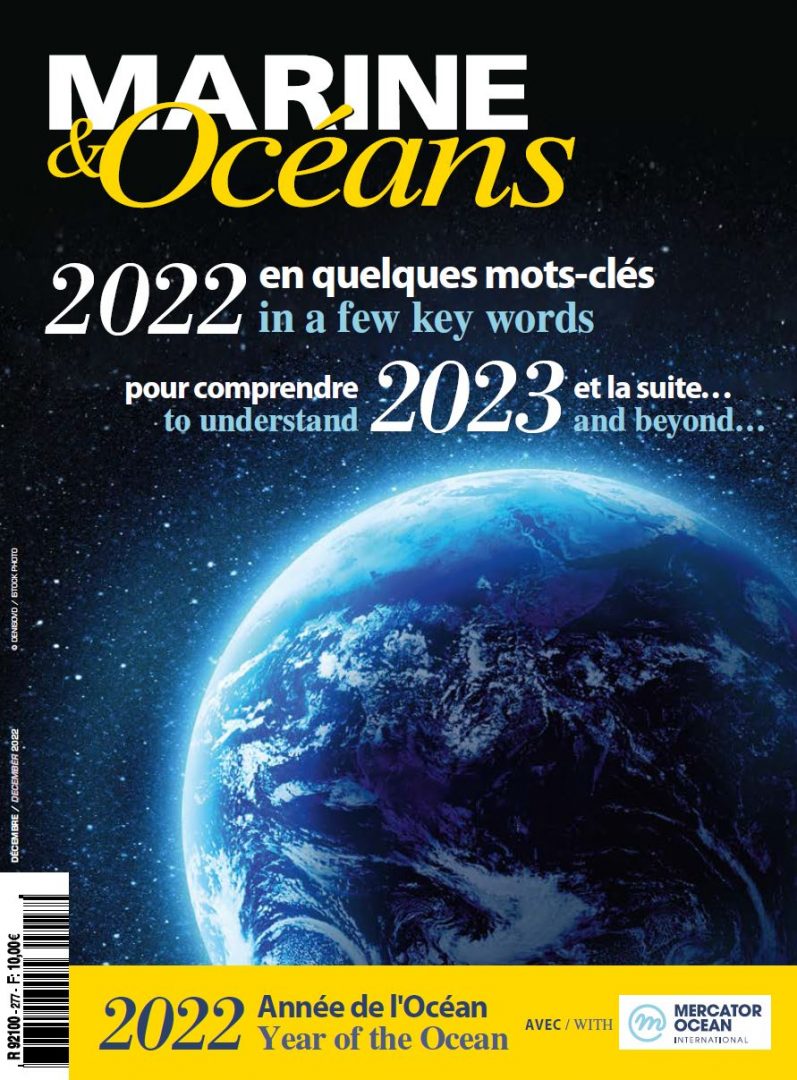The shipping industry must complete its transformation into a clean mode of transport by eliminating C02 emissions. Hydrogen appears to be a promising way. Explanations.
By Philippe Berterottière, Gaztransport and Technigaz (GTT) CEO
The shipping industry is increasingly being challenged about its emissions. It is important to remember that maritime transport accounts for 80% of shipping needs but only for 2.6% of global emissions. But the persistent vision of the black plume of traditional fuels still suggests that shipping is a very polluting mode of transport and is therefore urged to significantly reduce its emissions.
In 2021, the surge in orders for LNG (liquefied natural gas) powered ships will have demonstrated that this fuel is the only solution for the coming decades as it eliminates a large number of highly damaging pollutants (sulphur oxides, nitrogen oxides and fine particles) while significantly reducing CO2 emissions. But charterers and shipowners are already thinking about the next step: how to completely eliminate CO2 emissions? Various options are being explored: synthetic LNG or synthetic methanol, which would make carbon neutrality possible; green ammonia, whose combustion does not generate CO2 (but nitrous oxide, otherwise known as “laughing gas”, a gas whose greenhouse effect is 300 times greater than CO2). Hydrogen is also mentioned. In concrete terms, what is the situation today and what are the remaining barriers to overcome?
THE PEM ELECTROLYSIS TECHNOLOGY
Today, the production of a ton of hydrogen generates about 10 tons of CO2. In other words, the current production of hydrogen is one of the most polluting activities, generating about as much CO2 as maritime transport itself! Hydrogen for a greener maritime transport must therefore be produced through electrolysis of water using so-called “green” electricity, obtained from renewable energy sources. As the electrolysis operation requires a lot of electricity, the competitiveness of green hydrogen depends on the cost of electricity on the one hand and the efficiency of the electrolyser on the other. Today, the only French company producing viable electrolysers in France, Elogen, is dedicating its R&D to this race for efficiency. Using the PEM (Proton Exchange Membrane) electrolysis technology, Elogen adopts a proven technology that still has great potential for improvement.
Once this production of green hydrogen is ensured, we still have a gas with a low energy density: in a given volume, the amount of energy is low, much lower than with current fuels. This is the reason why compressed hydrogen is used for short-distance activities: coastal shipping, ferries, tugs, yachts, etc.
The Compagnie Maritime Belge (CMB) was the first to use hydrogen as a fuel. Rather than using it to power a fuel cell, CMB instead chose to directly use hydrogen to power an internal combustion engine. A clever idea, since the fuel cell/electric motor combination is infinitely more expensive than an internal combustion engine and off ers much less torque. The possibility of converting to hydrogen for ships, on short distances, and with a capacity to refuel frequently, thus looks quite realistic for the near future.
“ROCKET SCIENCE”
Hydrogen can also be liquefied at a temperature of -253°C, very close to absolute zero, dividing its volume by 800. For the same amount of energy, a liquid hydrogen tank would be twice as large as a liquid natural gas tank. Today, rockets constitute one of the few industrial applications of liquid hydrogen fuel. The tank filling operations are particularly complex and there is no desire to make them even more delicate by adding insulation. Transferring space technologies, or “rocket science” as the Americans would say, to the maritime industry while adding the insulation component is a challenge that will require time to be resolved, and on which GTT is already working.
The race for clean energy means that electricity production can be envisaged in areas where wind or sunshine conditions are very favourable, on the open sea with floating wind farms (in order to maximise the load factors of the wind turbines) or on the most appropriate latitudes for solar energy. But this energy will then have to be redirected to high consumption areas, something that electricity, for both technical and cost reasons, cannot provide. This is why hydrogen produced through water electrolysis is being considered as an option. As regards solar energy, the only thing to do would just consist in liquefying hydrogen and then transport it using hydrogen tankers.
This is something that GTT, which has been developing LNG tanker technologies for sixty years, is following very closely. In the case of off shore wind power, it is necessary to be able to generate hydrogen immediately, possibly at the base of the tower itself, using very compact electrolysers, which is possible with PEM technology. The hydrogen will then be collected by pipes or ships.
AT THE CORE OF THE ENERGY TRANSITION PROCESS
Talking about synthetic methanol or synthetic LNG as marine fuels for the future implies the capacity to produce large quantities of green hydrogen and then combine it with captured CO2 to produce these well-known but now green molecules. The solution is attractive, but its implementation is more complex: a lot of green hydrogen is needed, CO2 must be captured, and the result of the combination must be affordable in order to make maritime transport competitive with other means of transport. Clearly, the hydrogen technology is likely to become a reality for the maritime industry, for short distances when used as a fuel, and for energy transport on long distances in the form of liquid hydrogen. These perspectives are at the core of the energy transition process and France has undeniable assets to take up the technological challenges, and notably the expertise in technologies for the maritime transport of cryogenic liquids and the advanced technologies for electrolysis (which have been operational on nuclear submarines for several decades). European and French ambitions in hydrogen should reinforce these assets, for our country and even more for the planet.


